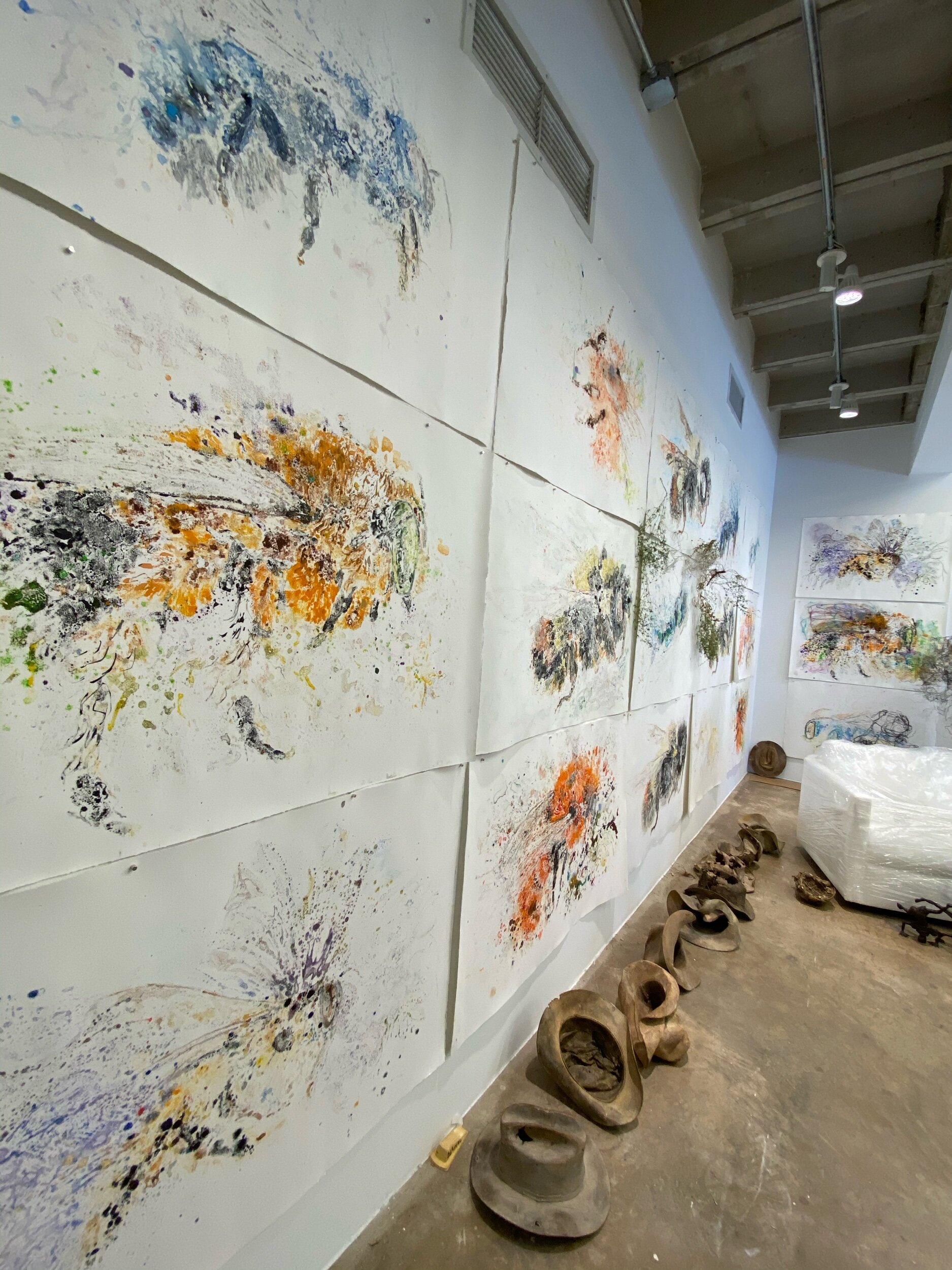Neonicotinoids disturb bumble bee and flies sleep and ability to know when to forage. It is banned in the EU and not in the US. This isn’t enough, these products used in urban gardens harm bees. Articles like these inspire me to plug on.
I have lost count
artist statements are also works in progress
as it sits
RUMBLINGS
Artist statement
A rumbling in the distance is nature's way to alert living creatures to their environment.
Rumblings is a work in progress, a monumental collection of fifty 30" X 44" watercolor monotypes that draw attention to the endangered knowledge of the 20,000 species of wild bees.
In these works, I carefully manipulate watercolor ink, and solvent into a chaos of infinitely miniscule paint particles. The materials are interconnected across the over-size monotypes, paralleling the synergistic, aqueous effects of the untold bee species' magnetic attraction to golden dust and their corresponding fragility due to the applied chemicals that flood residential gardens and industrial agriculture. Closely studying their exceptional ability to buzz and pollinate with their exceptional pollen-adhering bodies, I use abstraction and zoom in to depict the organized mayhem of their movements.
The installation of Rumblings inspires curiosity, alerting all viewers to pay attention, asking them to consider the unintended consequences of their actions in our-interconnected micro ecosystems. It is a resounding call to decrease pesticide usage, provide habitats for nesting, and plant native indigenous plants providing nectar for the bees that are responsible for 70% of the foods we eat.
What I do not know is when and where they will be installed, when that is in the picture I may find ways to connect the pieces visually. That will have an impact on the statement. Until the plant beautiful native plants.

















